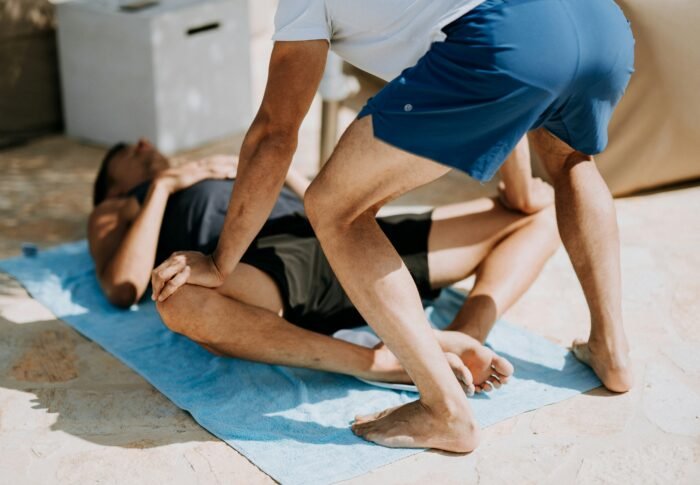
Quick and Easy Crate Training Tips
Let us help you make crate training a breeze with these quick and easy tips. Whether you have a new puppy or an adult dog, crate training can be a useful tool in housebreaking and providing a safe space for your furry friend. In this article, we will share valuable insights on how to make crate training a positive and stress-free experience for both you and your pet. Say goodbye to accidents and anxiety, and say hello to a well-behaved and contented pup!

This image is property of images.pexels.com.
Find products like these on Amazon!
Choosing the Right Crate
When it comes to crate training your dog, one of the most important considerations is choosing the right crate. The first thing you need to take into account is the size of your dog. The crate should be large enough for your dog to stand up, turn around, and lie down comfortably. If the crate is too small, your dog may feel cramped and uncomfortable. On the other hand, if the crate is too large, your dog may not feel secure and may even use one end as a bathroom.
In addition to size, it’s important to find a crate that is durable and well-ventilated. Dogs can be quite strong, especially when they’re anxious or excited, so it’s essential to have a crate that can withstand their attempts to escape. Look for crates made of strong materials like metal or heavy-duty plastic. Proper ventilation is also key to ensuring your dog’s comfort and safety. Make sure the crate has adequate openings to allow for fresh air circulation.
Another factor to consider is the ease of cleaning. Accidents can happen, whether it’s a potty accident or your dog’s favorite treat that ends up making a mess. Look for a crate with a removable tray or bottom to make cleaning a breeze. This will not only make your life easier but also help maintain a clean and hygienic environment for your dog.
Lastly, investing in a crate with a secure latch or lock is crucial. You want to ensure that your dog stays safely inside the crate and that there’s no risk of them accidentally opening it. A secure latch or lock will give you peace of mind, knowing that your furry friend is safe and secure in their crate.
Introducing the Crate
Once you’ve chosen the perfect crate for your dog, it’s time to introduce them to their new cozy den. It’s important to make the crate a welcoming and inviting space for your furry friend. Start by placing the crate in a calm and quiet area of your home. This will help create a soothing environment for your dog to relax.
To make the crate more inviting, add some comfy bedding and a few of your dog’s favorite toys. This will make the crate a comfortable and familiar space that your dog can associate with positive experiences. Having their favorite toys nearby will also help distract them and keep them entertained while in the crate.
In the beginning, leave the crate door open and allow your dog to explore it at their own pace. Let them sniff around, go in and out if they please. This will help them become familiar with the crate and get comfortable with it being in their space. Be patient and give them time to adjust to this new addition to their environment.
As your dog starts to show interest in the crate, be sure to reward them for entering voluntarily. This can be done with treats, praise, or a combination of both. By rewarding your dog for going into the crate, you are reinforcing the positive association and encouraging them to see it as a safe and comfortable space.
Find products like these on Amazon!
Establishing a Routine
Consistency is key when it comes to crate training. Creating a consistent schedule for crate training will help your dog understand what is expected of them and when crate time is coming. Dogs thrive on routines, so having a clear schedule will make the training process smoother and less confusing for them.
Before crating your dog, take them outside for a bathroom break. This will help prevent any accidents while they are in the crate. Remember, dogs have a natural instinct to keep their den clean, so they are unlikely to relieve themselves inside the crate if they have had the opportunity to go outside beforehand.
To signal crate time, use verbal cues or commands that your dog can associate with going into the crate. This can be as simple as saying a word like “bed” or “crate” in a calm and reassuring tone. Over time, your dog will start to understand what you mean when you give them this cue and will willingly go into the crate.
Start with short durations of time in the crate and gradually increase the time your dog spends inside. This will help build their tolerance and comfort level with being confined. Be sure to provide plenty of positive reinforcement, such as treats and praise, when your dog is calm and well-behaved inside the crate. This will help reinforce the idea that being in the crate is a positive experience.
Positive Reinforcement
Positive reinforcement is a powerful tool when it comes to crate training. By rewarding your dog for good behavior, you are encouraging them to repeat that behavior in the future. There are several ways to use positive reinforcement during crate training.
One effective method is to reward your dog with treats or praise when they enter the crate voluntarily. This helps them associate entering the crate with a positive outcome. Make sure to offer treats or praise immediately after your dog goes into the crate to ensure they make the connection between the behavior and the reward.
Another way to reinforce positive behavior in the crate is to provide special toys or treats that are only given when your dog is in the crate. This creates a sense of anticipation and excitement for your dog and gives them something to look forward to when they are crated. Special toys or treats can help keep your dog entertained and occupied while they are in the crate, making the experience more enjoyable for them.
It’s important to avoid using the crate as a form of punishment. Your dog should never view the crate as a place where they are isolated or confined as a consequence for misbehavior. Instead, focus on using positive reinforcement to encourage good behavior inside the crate. By creating a positive association with the crate, you will help your dog see it as a safe and comfortable space.

This image is property of images.pexels.com.
Accustoming to Alone Time
One of the ultimate goals of crate training is for your dog to be comfortable spending time alone in the crate. This is particularly important if you need to leave your dog home alone for periods of time. However, it’s essential to introduce alone time gradually to avoid causing anxiety or distress.
Start by leaving your dog alone in the crate for short periods of time, gradually increasing the duration as they become more comfortable. Begin with just a few minutes and gradually work your way up to longer periods. This will help your dog build confidence and feel secure in the crate while you are away.
It’s important to ignore any whining or barking that may occur while your dog is crated. This can be challenging, especially if your dog is just starting crate training or has separation anxiety. However, giving in to their demands or providing attention when they exhibit this behavior will only reinforce it. Instead, wait for a moment of calmness before opening the crate or approaching your dog. This teaches them that being calm will result in their release from the crate.
To ensure your dog remains happy and content inside the crate, make sure they get plenty of exercise and mental stimulation outside of crate time. Regular exercise and playtime will help release excess energy and reduce restlessness, making it easier for your dog to relax in the crate. Mental stimulation, such as puzzle toys or training sessions, can also help keep your dog engaged and mentally stimulated.
Avoiding Separation Anxiety
Separation anxiety can be a challenging issue for some dogs, making crate training more difficult. To prevent or address separation anxiety, it’s important to gradually build up your dog’s comfort with being alone. This can be done by starting with short periods of time in the crate and gradually increasing the duration.
Creating a positive association with the crate is crucial for dogs with separation anxiety. This can be achieved by giving treats or toys that your dog loves exclusively when they are in the crate. Offering something special and enjoyable will help create a positive emotion around being inside the crate, minimizing any feelings of anxiety or distress.
When leaving or returning home, it’s important to avoid making a big fuss over your dog. While it’s tempting to shower them with attention, this can actually increase their anxiety. Instead, be calm and matter-of-fact in your actions, both when leaving and when returning. This will help your dog see crate time as a normal part of their routine rather than a significant event to stress about.
If your dog continues to struggle with separation anxiety despite your efforts, it may be helpful to consider using calming aids or pheromone diffusers. Products such as anxiety wraps, herbal supplements, or diffusers that emit calming pheromones can help create a soothing environment for your dog and reduce their anxiety levels.

This image is property of images.pexels.com.
Preventing Accidents
Accidents happen, but there are steps you can take to prevent them while crate training your dog. One of the most important things you can do is to take your dog outside for bathroom breaks frequently. This should be done before and after crating, as well as at regular intervals throughout the day. A consistent schedule will help regulate your dog’s elimination habits and reduce the risk of accidents.
Establishing a consistent feeding schedule can also help regulate your dog’s elimination. By feeding your dog at the same times each day, you can predict when they are likely to need a bathroom break. This makes it easier to schedule their outdoor time and avoid accidents inside the crate.
Avoid leaving food or water in the crate for extended periods of time. While it’s important to provide your dog with access to water, leaving it in the crate for too long can lead to accidents or discomfort. Instead, offer water regularly throughout the day and remove any excess before crating your dog.
Regularly cleaning the crate is essential for maintaining hygiene and preventing odors. Accidents can leave behind strong smells that may attract your dog to eliminate in the same spot again. Use pet-safe cleaners to thoroughly clean the crate and remove any lingering odor. This will help create a clean and pleasant environment for your dog.
Troubleshooting
During the crate training process, you may encounter challenges or concerns. It’s important to address any fears or anxieties your dog may have about the crate. Take the time to observe your dog’s behavior and identify any specific triggers or causes of stress. By understanding their fears, you can work on gradually desensitizing them to those triggers.
If your dog displays severe behavioral issues during crate training or if you’re struggling to make progress, it may be beneficial to seek professional help. A professional dog trainer or behaviorist can provide personalized guidance and support based on your dog’s specific needs and challenges.
Avoid forcing your dog into the crate. This can create negative associations and make the crate training process more difficult. Instead, be patient and give your dog time to adjust to the crate at their own pace. With time, patience, and positive reinforcement, your dog will become more comfortable and accepting of the crate.
Gradual Graduation
Once your dog is comfortable and relaxed in the crate, you can start the process of gradually leaving the room for short periods. Begin by stepping out of sight for just a few seconds and then return. As your dog becomes more accustomed to your brief absences, gradually increase the distance and duration of your absences.
Reward your dog for calm behavior when you return. This can include treats, praise, or just a gentle pat on the head. By rewarding your dog for staying calm and relaxed, you are reinforcing the desired behavior and encouraging them to remain calm even when you’re not in sight.
With consistent practice and positive reinforcement, your dog should eventually be able to stay crated when you’re away from home. This is a significant milestone in crate training and a testament to your dog’s progress and comfort with the crate.
Alternative Crate Training Methods
While traditional crate training is effective for most dogs, some may not take well to being confined in a crate. In such cases, alternative crate training methods can be explored. These methods aim to provide a safe space or controlled environment without the use of a traditional crate.
One alternative method is using a crate as a safe space. Instead of using the crate for confinement, it can be left open and accessible to your dog at all times. This allows your dog to enter and exit the crate as they please, using it as a cozy den or resting spot. By providing a designated safe space, your dog can still enjoy the benefits of crate training without feeling confined.
Using a playpen or gated area instead of a crate is another alternative method. This creates a larger, enclosed space for your dog, allowing them to move around more freely. Playpens or gated areas can be set up in a suitable area of your home, providing a secure and comfortable space for your dog when you’re not able to supervise them.
Crate training can also be useful for travel purposes. Using a crate in the car can help keep your dog safe and secure during trips. Familiarize your dog with the crate before the journey by incorporating it into their daily routine. This will help them see the crate as a comfortable and familiar space, reducing any travel anxiety they may experience.
Additionally, crate training can be used as a tool for chew toy training. Dogs who have a tendency to chew on furniture or other household items can benefit from being crated with appropriate chew toys. By providing them with an enticing alternative, you can redirect their chewing behavior and protect your belongings.
In conclusion, crate training can be a beneficial and positive experience for both you and your dog. By choosing the right crate, introducing it properly, establishing a routine, and using positive reinforcement, you can ensure a successful and stress-free crate training journey. Remember to be patient, consistent, and always prioritize your dog’s comfort and well-being. With time and practice, your dog will become comfortable and content in their crate, making it a safe and enjoyable space for them.
Find products like these on Amazon!







-
-
1 day
Tagged behavior modification, Techniques, tips